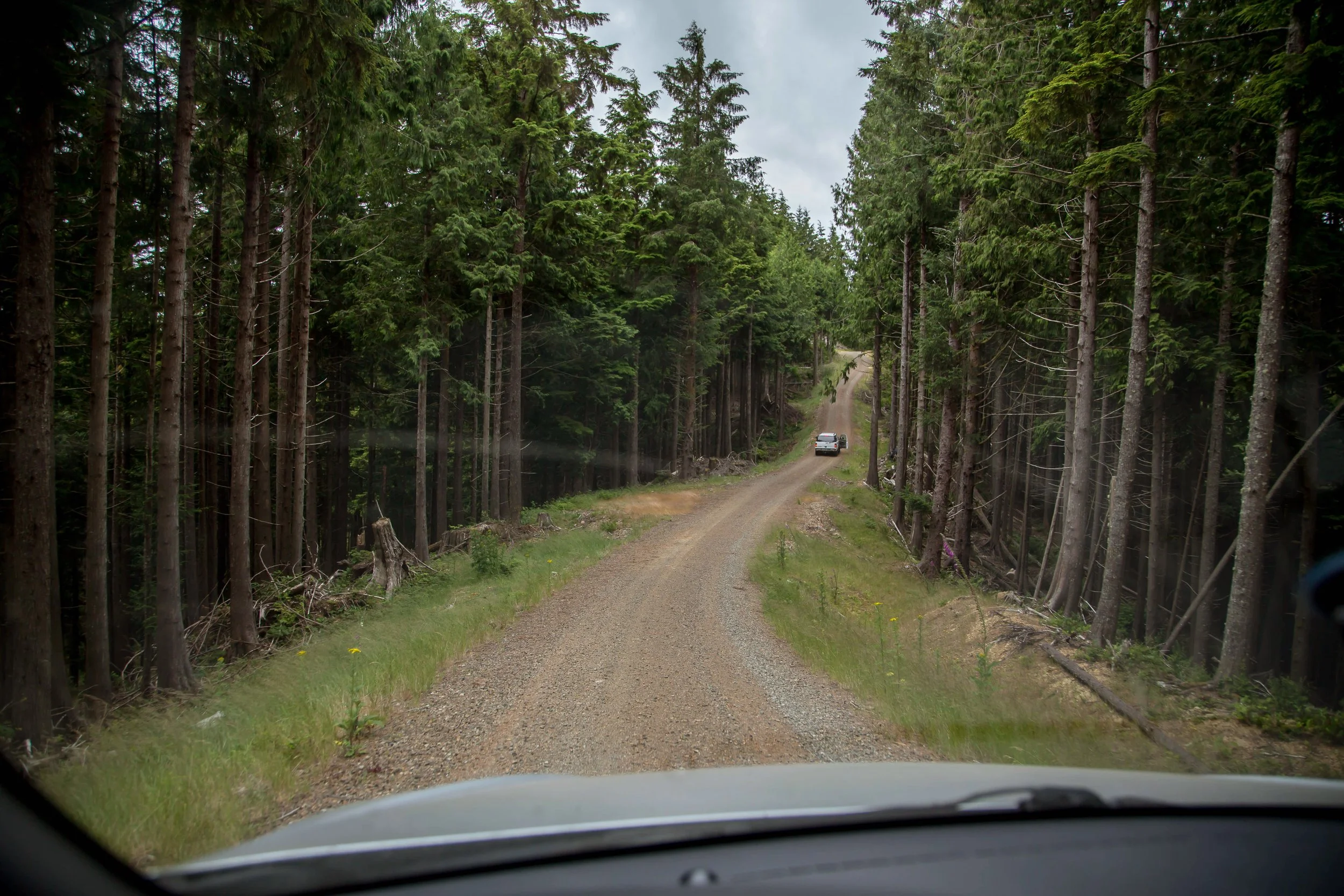by Garrett Price, graduate student at Washington State University
The forests at Ellsworth Creek Preserve, in southwest Washington, have been heavily logged throughout the last century. The preserve is largely composed of second-growth forests, forests which have re-grown after timber harvests. Second-growth forests are structurally simple containing similar trees of similar ages, and vastly outnumber old-growth forest stands at Ellsworth.
Second-growth forest at Ellsworth Creek Preserve. Photo: G. Tomas Corsini Sr.
On the contrary, old-growth forests are structurally more complex, and serve as better habitat for threatened species (such as the Marbled murrelet). The Nature Conservancy plans to restore old-growth forest characteristics at Ellsworth Creek Preserve through restoration thinning of trees, which should decrease tree density found in second-growth forests and promote a more complex forest structure where the vegetation is diverse and includes trees of different sizes, heights, and ages. Furthermore, old-growth forests characteristics may increase resilience to climate-induced disturbances, including drought.
Old growth forest at Ellsworth Creek Preserve. Photo by Hannah Letinich
The research goal at Ellsworth Creek Preserve is to test this key question: have restoration thinning treatments at Ellsworth increased the trees’ resilience to drought? Investigating this question requires two basic steps. First, out in Ellsworth, we need branches from the tops of large trees, such as Western hemlock.
We target upper branches because they’re sun-exposed, and therefore driest. To get our hands on these branches, we use a drone.
Jason Maxfield, Senior Researcher at Portland State University, prepares an A DeLeaves sampling device, a claw with a built-in rotary sawblade used for cutting branches to aid in drought research. Photo: Michael Case\TNC
The drone carries a DeLeaves sampling device: a claw with a built-in rotary sawblade, which allows us to grab branches (like an arcade claw machine), and deliver them to the ground. We can then check the water status of these branches to see how much they dry out over the course of the summer.
Next, we take the branches back to the lab to test how severe of a drought the trees can withstand without dying. Drought damages plants by forcibly pulling water from their tissue, drying them out. This can be simulated in a lab setting by spinning a branch sample in a centrifuge. The pull of centrifugal force on the water in the branch mimics the pull exerted by dry air on plant tissue during drought. The faster the spin, the more severe the simulated drought.
Aerial view of Ellsworth Creek Preserve. Photo: Chris Crisman
By spinning branches at successively faster speeds, and measuring the flow of water through them, we’ll learn how much drought they can withstand, and how resilience to drought differs between stands that were thinned and stands that weren’t. Through this research, more insight will be gained into how best to manage and restore important coastal rainforests like Ellsworth Creek Preserve, especially in a future where more frequent drought is the norm.
If we can manage to do this without crashing our drone, we’ll be doubly thrilled.


































